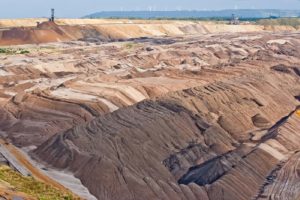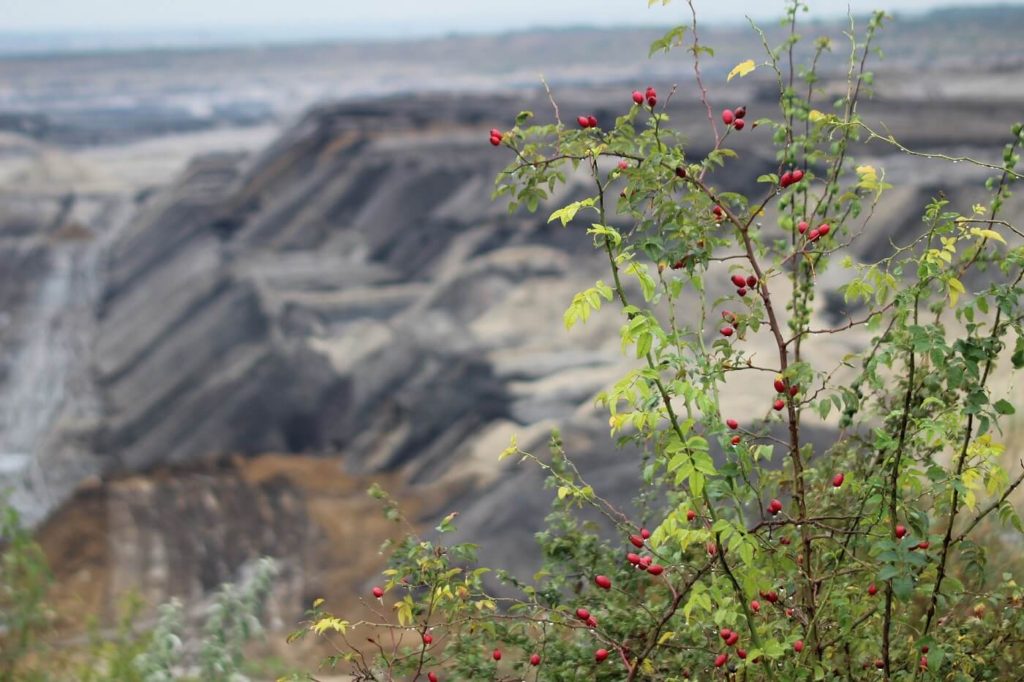So why are Wyoming’s coal mines falling so far behind on their reclamation targets?
A new report published by Powder River Basin Resource Council shows that of the approximately 206 square miles of land strip-mined or otherwise disturbed by coal operations, only 2.4% has been fully reclaimed. “Reclaim Wyoming: Prioritize Coal Mine Reclamation” tracked statistics on fourteen Wyoming coal mines and found that reclamation has fallen behind the rate of extraction, even though state and federal law requires it to take place alongside active coal mining. The report investigates why the reclamation rate is slow and highlights the economic benefits of increased reclamation efforts.
“Reclamation jobs are good jobs and ensure that the mine workers will have employment for several more years, no matter what happens with the coal markets.”
“Reclamation takes a lot of time and money and, as much as possible, needs to be completed while mines are profitable,” said Stacy Page, a Powder River member and former regulator involved in reclamation. “Waiting until the end of a mine’s life adds risk that reclamation may not meet the required standards and could become a burden to the state, counties, and companies.”

Powder River’s report team also found several reasons why mine reclamation lags behind production, and identified solutions. The report proposes three recommendations to improve reclamation rates. First, it recommends ending the practice of self-bonding to ensure that companies are financially invested in completing reclamation activities. Self-bonding isn’t a actual money set aside for cleanup but rather a company’s promise to pay. Second, the report recommends establishing a firm definition of the “long-term mining or reclamation facilities” to reduce the amount of land that companies can delay reclaiming. Last, the report calls for increased enforcement of contemporaneous reclamation requirements by state and federal regulators so that reclamation happens as it should, and more jobs are created.
Reclamation is a key factor in diversifying and stabilizing Wyoming’s economy. To fully reclaim all of the eligible disturbed acres will require many years of work, which would keep miners working right in their communities, even during downturns. For communities heavily dependent on coal, reclamation can help ease the boom-and-bust cycle until new industries are established.
“In an economic downturn, if contemporaneous coal reclamation is a priority, as it should be, miners will not be laid off as quickly because there is still important work to do,” said Joyce Evans, Resource Council Chair. “Reclamation jobs are good jobs and ensure that the mine workers will have employment for several more years, no matter what happens with the coal markets. Plus, coal miners already have the skills needed for successful reclamation.”
Download “Reclaim Wyoming: Prioritize Coal Mine Reclamation” for a deeper look at the current state of coal mine reclamation in Wyoming, as well as ways that reclamation can lead to a better future for the state.
If you’re looking for more in-depth reporting on reclamation in the coal industry, check out: Now is the Time to End Self-Bonding
Read more coal stories here.
Read more:
Investigation of Ramaco Principals Reveals Shady History
Current State of Coal Industry and Mineral Tax Collection Creates a Tax Time-bomb
Unanimous Vote by Wyoming Environmental Quality Council Clears the Way for Strong Self-Bonding Rules


